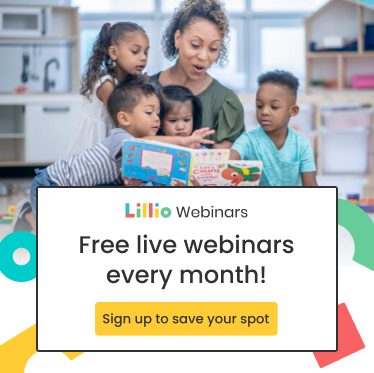How to Engage Families in Their Child’s Learning
An educator in a professional learning environment quickly learns that taking care of the children also means taking care of their families. This is easier said than done, however, because modern parents have identified that they are experiencing burnout, largely through working between 40 to 50 hours per week. So how can we engage the children’s families when the last thing they need is to do more?
Individual Families; Individual Needs
Educators are trained to treat each child individually, regardless of expected developmental levels in the child’s age group. Since the traditional construct of a family is ever-evolving, they need to be treated similarly. Educators must have a variety of methods to keep different families engaged.
- In-person meetings – These are currently the standard for best practices. Some families have a larger capacity for being involved in their child’s learning, and appreciate a reciprocal involvement from the educator.
- Digital communication – Sometimes, this is all a family has the capacity for. Whether you choose a digital communication platform, or a type of online survey/questionnaire, there must be a way to connect with families who are unable or reluctant to communicate in person.
- Following cultural expectations – Some cultures have a different set of expectations with how educators and families ought to interact. Understand what these are so that you can at least meet them halfway as a method of developing trust and engagement.
Short and Meaningful Conversation
An educator must master the skill of conducting short and meaningful communication, especially in the commotion of an early years environment. Oftentimes, educators have an intention of communicating a message without considering the families’ capacity for listening. Family members could be in a rush or have had a bad day so it’s important to check in with them to see what type of conversation is presently available.
This is where having a digital communication app is an asset to the program. It allows for regular communication throughout the day, and has two significant benefits. Firstly, it prepares the caregiver for what has gone on in their child’s day – the challenges, the strategies, the successes – so that before pick-up, they have the chance to widen their scope of receptive communication. Secondly, the educator is granted the flexibility of what to communicate through which method. The daily and routine events can be shared digitally, and the more meaningful messages can be relayed personally, by day’s end. This can also be swapped, depending on each family’s preference.
It Begins with the Child
Developing this level of trust and connection with family begins with the child, so be sure to really get to know the little ones in your classroom. An effective way to do this is by adding a self-reflection curriculum into your program. The trust that you build with each child will be the gateway to more meaningful familial communication, and will open the doors to a higher level of engagement and support.
Kiah Price is a Social Media Specialist at HiMama. Prior to HiMama she was an Early Childhood Educator in a preschool classroom in Toronto. She is the Jill of all trades at HiMama from dipping her toes in Sales, Customer Success, Operations, and Marketing! She enjoys sweating through spin classes, hot yoga, and biking along the waterfront trails in Toronto. She loves traveling and trying new foods and wines across the globe- 29 countries and counting!
More by Kiah
Kiah Price
December 20th, 2021
3 mins

Related Articles

Using Lillio to Simplify Tax Receipts in Early Childhood Education
January 23rd, 2025 | Maddie Hutchison
